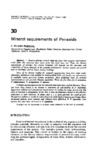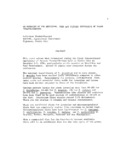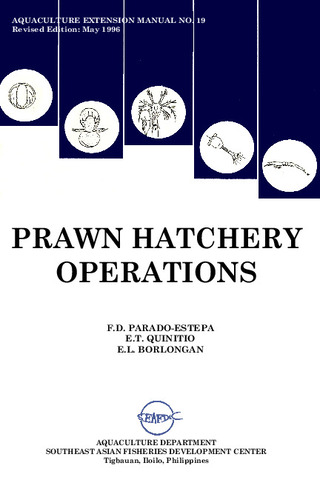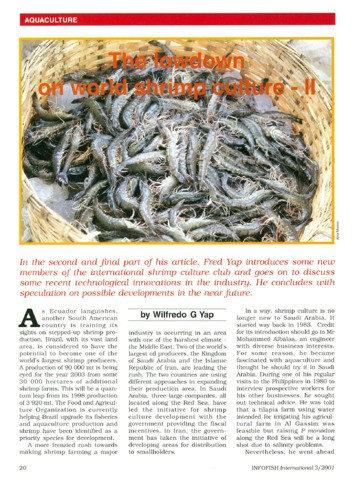Mineral requirements of Penaeids

URL ที่เชื่อมโยง
archimer.ifremer.frวันที่
1990ผู้เขียน
Page views
808เมตาดาต้า
แสดงระเบียนรายการเต็ม
Share
นามธรรม
Marine shrimps absorb minerals from their aquatic environment aside from the minerals that come from the food they eat. Thus, the dietary requirement of shrimps for certain minerals will depend on the amounts and availability of these minerals in the aquatic environment. Dietary sources for growth may be necessary due to losses during moltings.
Most of the dietary studies for mineral requirements have been done under laboratory conditions with purified or semi-purified diets and hardly any information is available under practical culture conditions. Most published data for mineral requirements are for juvenile Penaeus japonicus. There are few data for P. monodon, P. californiensis, P. merguiensis, P. aztecus.
Calcium and phosphorus are the minerals that have been studied the most. These two have been found to be related to problems of soft-shelling in P. monodon. Apparently calcium and phosphorus requirements are within the range of 1 to 2%. The ratio of calcium to phosphorus in the diet is also an important factor in the efficient utilization of both minerals. It seems that a 1 :1 ratio provides for good growth. Phosphorus deficiency results in reduced growth while lack of magnesium brings about decreased growth, poor survival and reduced feed efficiency in P. japonicus. Iron toxicity has also been observed in P. japonicus.
It might not be necessary to include some minerals in the diet of penaeids.
การอ้างอิง
Piedad-Pascual, F. (1990). Mineral requirements of Penaeids. In Advances in Tropical Aquaculture: Workshop at Tahiti, French Polynesia, February 20 - March 4, 1989 (pp. 309–313). Tahiti: Institut Francais de Recherche pour l'Exploitation de la Mer.
เรื่อง
Taxonomic term
คอลเลกชัน
รายการที่เกี่ยวข้อง
แสดงรายการที่เกี่ยวข้องตามชื่อผู้แต่งผู้สร้างและเรื่อง
-
An overview of the nutrition, feed and feeding techniques of prawn penaeid/shrimps
Piedad-Pascual, Felicitas (Philippine Council for Aquatic and Marine Research and Development, 1989)This paper echoes what transpired during the first International Conference of Penaeid Prawns/Shrimps held in Iloilo City in December 4-7, 1984, particularly on the Nutrition nd Feed Development. Around 25 papers were ... -
Prawn hatchery operations
Parado-Estepa, Fe D.; Quinitio, Emilia T.; Borlongan, Emeterio L. (Aquaculture Department, Southeast Asian Fisheries Development Center, 1996-05)The manual, an updated version of the 1984 SEAFDEC/AQD manual, presents the underlying principles and step-by-step instructions of prawn larval and post-larval rearing. The techniques described are not only applicable to ... -
The lowdown on world shrimp culture - II
Yap, Wilfredo G. (INFOFISH, 2001)This paper introduces some new members of the international shrimp culture club and goes on to discuss some recent technological innovations in the industry, particularly the polyculture of tilapia (mainly Oreochromis ...





